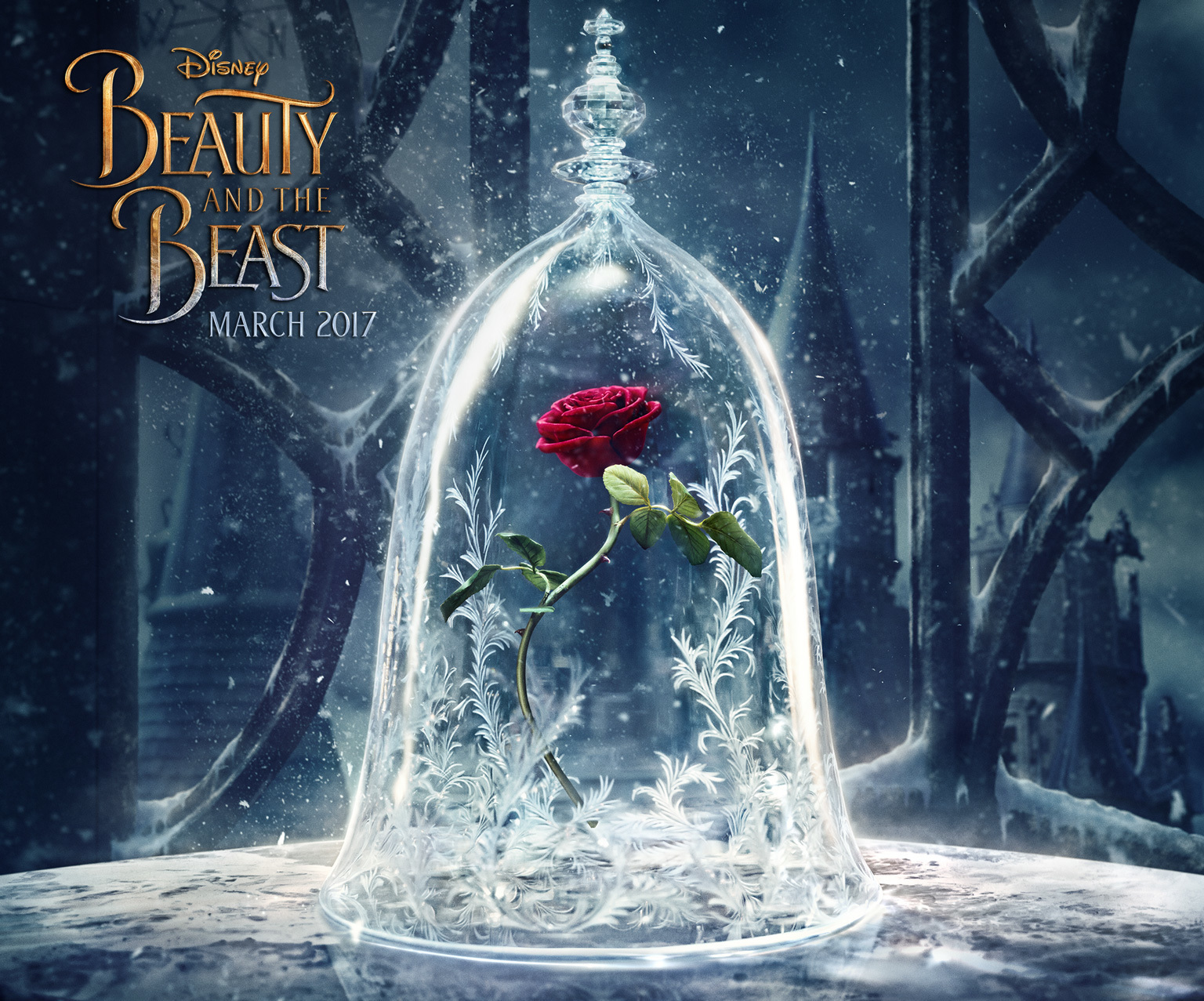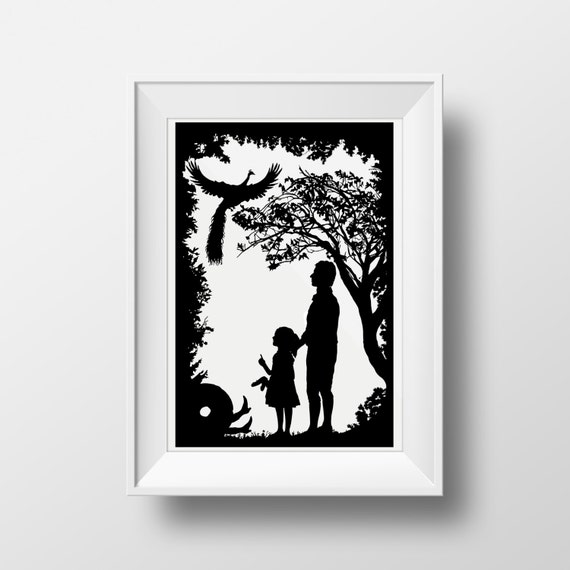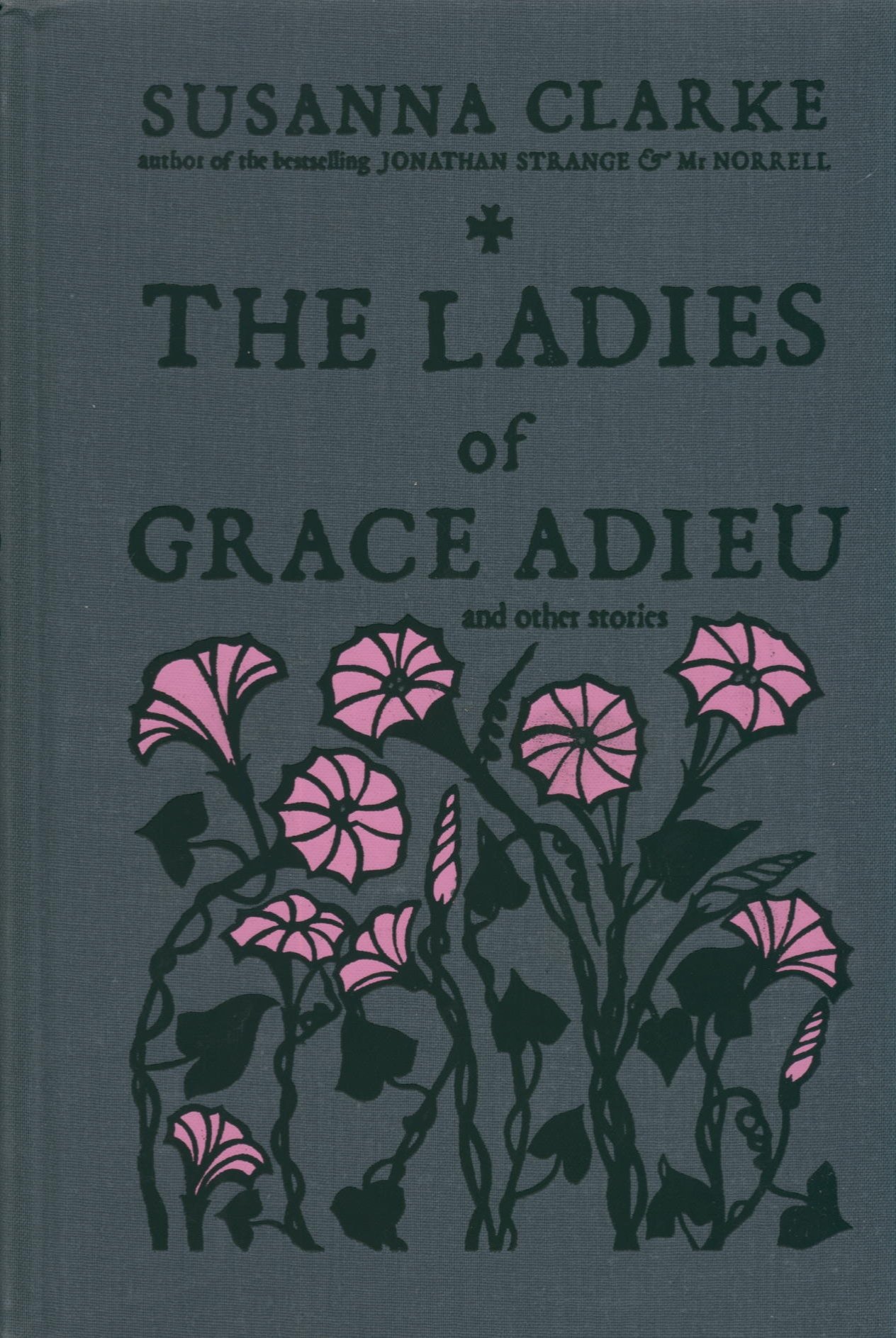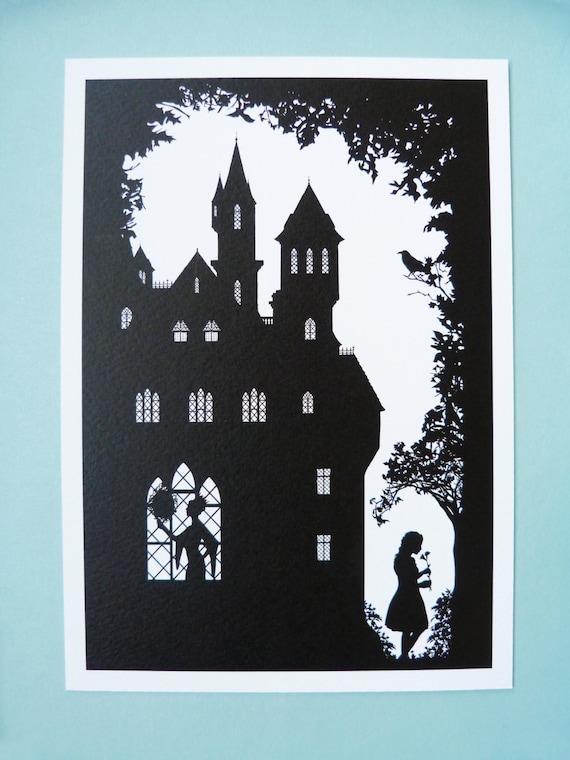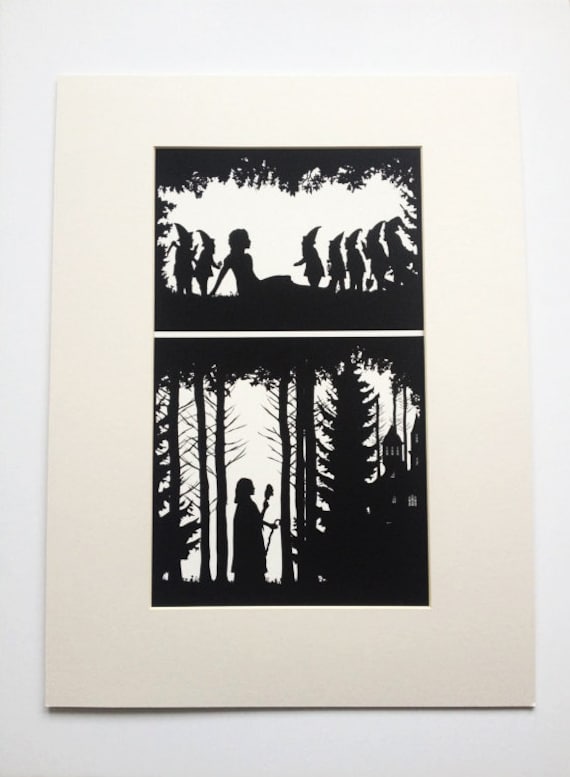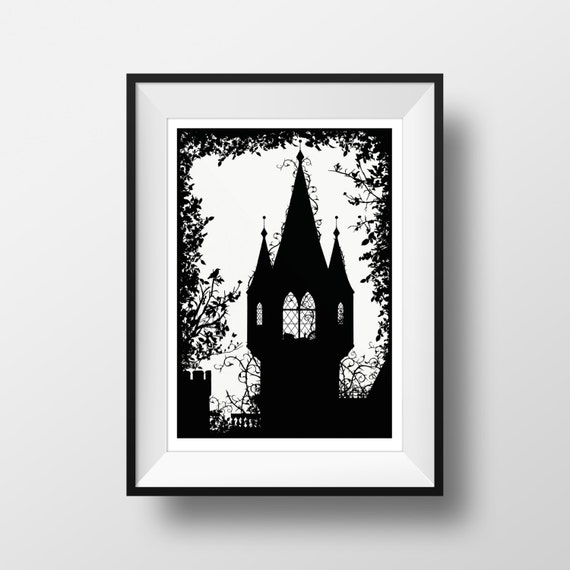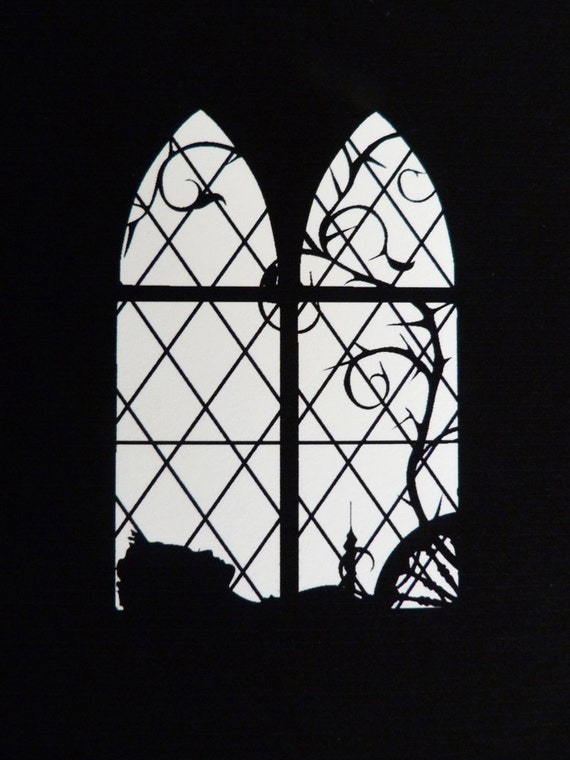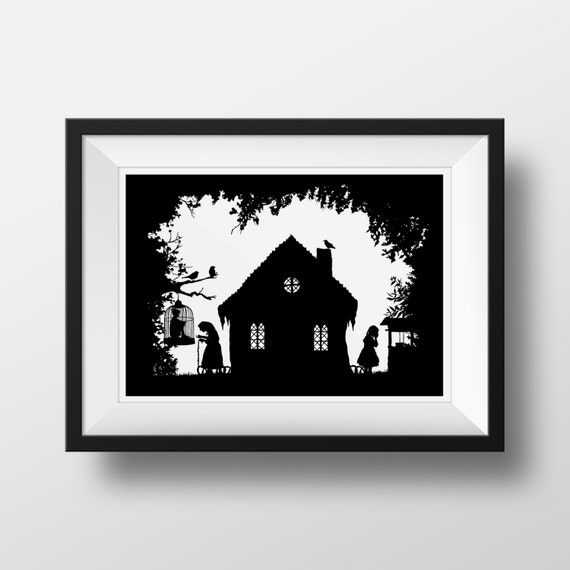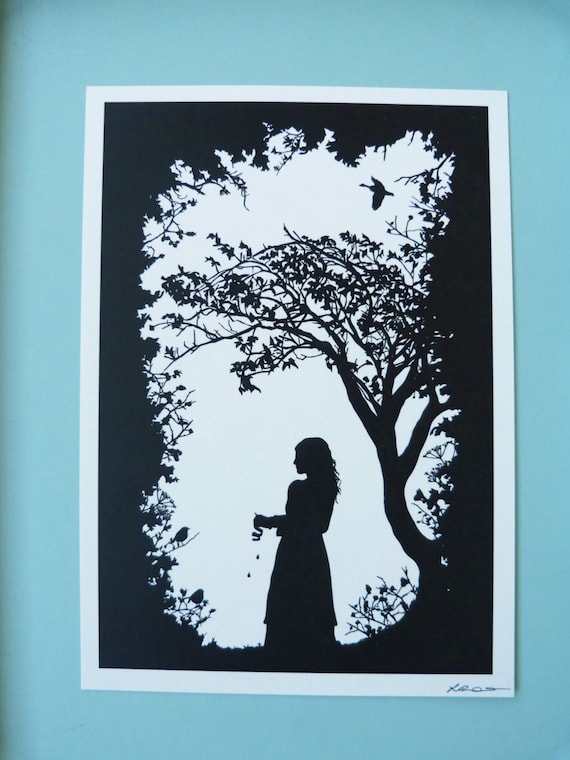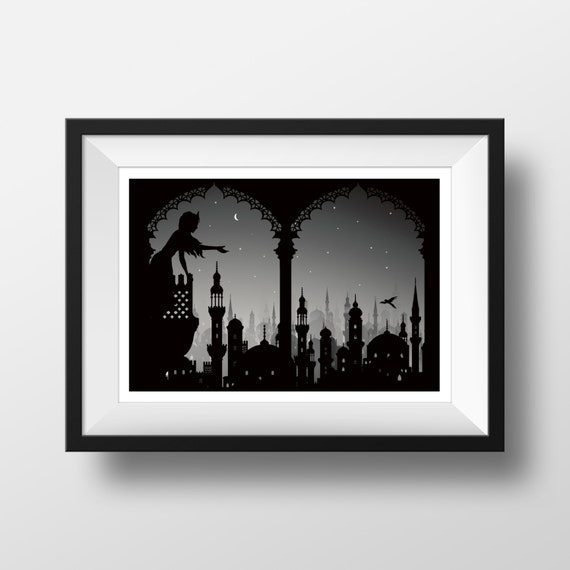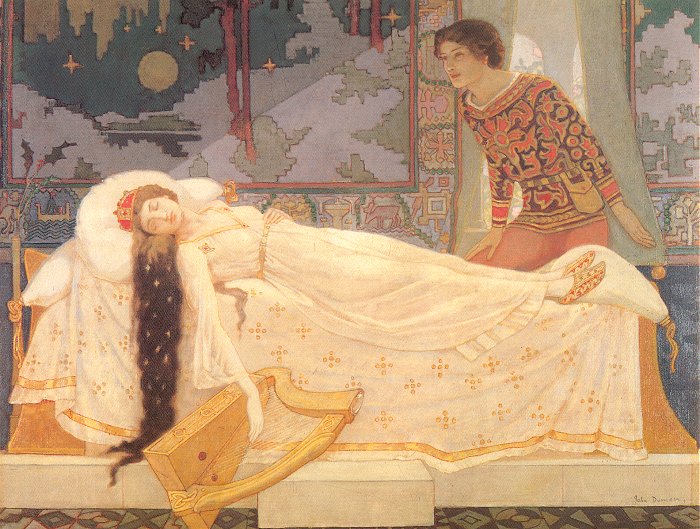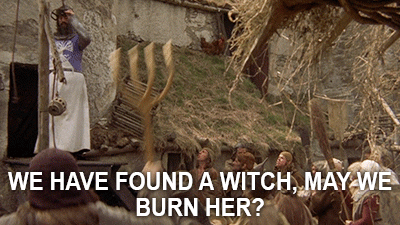I don't get out to see the Joffrey Ballet's Nutcracker every year, but last year when we learned it was their final time producing their classic version we made it out to Chicago to soak it all in one last time. This month I got to see Christopher Wheeldon's new take on it.
I've seen other more local productions too throughout the years, and various movie versions/youtube clips, and typically each company doesn't vary too much from the classic story, scenes, and characters. The new Joffrey Nutcracker is certainly unique-it's set the Christmas before the opening of the Chicago World's Fair of 1893 (which introduced the first Ferris Wheel to the world, among other novelties-you're welcome, Earth!). Clara (whose name went back to Marie...possibly a nod to the Hoffman story?) is now the daughter of one of the immigrant workers on the Fair. Her family lives in a shack on the developing Fair Grounds-one that was based on a historical photo.
So it's an interesting choice for a setting, although it may hold less appeal for out of towners. One of the most significant differences is that Marie is now poor, and the Christmas party scene looks very different. Purely from a visual perspective, the party scene isn't nearly as colorful or lush, but it makes for good exploration of what Christmas might have been like for most families around that time who couldn't necessarily afford the luxuries that Clara's family does in most ballets. From the program notes: "Instead of receiving luxurious and rare presents at a magnificent party in a vast house and then dreaming of even more presents and candy, our story offers a small gathering of immigrant workers coming together to celebrate the holiday with the things they have, filling the air with music and their vivid imaginations." When the tree transforms, it's significant not just because the tree magically grows, but because the tree originally started out as basically a cheap, Charlie Brown Christmas Tree that disappoints Marie, and it becomes a more lush and decorated tree in the process of growing.
The score is the same classic Tchaikovsky music, although with a few minor changes-during the party scene, some of the dances were played by three onstage musicians, as characters playing for the festivities. It added a sense of authenticity, although there were times I missed the full orchestra. The dance of the Sugar Plum Fairy (who is now the Queen of the Fair) was moved to earlier in Act 2 and I think at least one variation was removed (the Nutcracker or Cavalier's solo after the big Pas de Deux).
I like Chicago history as much as the next person,probably even more, and although the setting was interesting I almost felt by the end like we were being hit over the head with it, in almost propaganda-like fashion: "The Chicago World's Fair of 1893 was the greatest anyone could ever dream of!!!" The Fair isn't merely the setting with interesting themes to explore, it became the thing the ballet revolves around. The opening scene has a huge billboard advertising the coming of the Fair; instead of mechanical dolls at the party the Drosselmeyer character (the Great Impresario, modeled after the Fair's chief architect Daniel Burnham) creates a silhouette model of the Fair for the children; the Waltz of the Snowflakes was performed with the Fair in the background and the entire Land of Sweets was replaced by the Dream Fair. To be fair (haha...no pun intended), the setting did make sense of the dancers from all around the world, as the program compared the World's Fair to Disney World's Epcot, giving you a "taste" of different countries' cultures from around the world. Still, in the old Joffrey production that element was tied together by the dolls that came to life under the tree, each representing one of the dances in the second act.
One of the more disappointing changes for me, personally, was replacing the Russian dance with a Buffalo Bill's Cowboy Show. Although there really was a Buffalo Bill's Cowboy Show at the original Fair, making it historically accurate, the Trepak is one of the most iconic dances in the ballet- but really I just found the choreography to be unimpressive. I feel like they could have done more with Cowboy Bill than swinging a lasso, the saloon girls hardly did anything, and the dance lacked the energy of the Russian dance-but the rest of the audience loved that one. I also thought the choreography was poor for the Mother Ginger dance-which used to feature children doing tumbling and ballet, and is now child dancers in walnut costumes that frankly made me feel like I was watching a local dance studio's production of Nutcracker and not one of the top ballet companies in the country. Yet again, others disagreed-one reviewer called that dance the most hilarious part of the show.
So overall, it was an interesting look at the Nutcracker story and I enjoyed it. Still, for the traditionalists in our group, we kind of missed the ballet we knew and loved. Yet not everyone agreed with us-I overheard a woman afterwards saying she liked this better than the old ballet, and critics have given it great reviews. It will depend on what you're used to and expect when it comes to Nutcracker-some people may be itching for a new way to look at the story, but others of us love the nostalgia of recreating old traditions at Christmas-one of my favorite Christmas memories has just been replaced by a totally different ballet. Although I did like the concept, I don't know that I'll be dying to see this as often as I did the classic version (just as well, since it will be harder to get to it in future with a baby!). Speaking of which...one cool thing was that one of the party guests in the first act was "pregnant"-I think it's probably pretty rare to have a pregnant character in any ballet!
Although I really will miss my favorite element of the old ballet: one year, a child showed up to audition in a wheelchair, and so a character in a wheelchair was made part of the cast every year after that, participating naturally with the other boys in their party shenanigans. At the very end of the party scene, Drosselmeyer would give that child a magical "blessing" and it always made me tear up (I teach music to people with disabilities).
I don't know that I have a lot of local Chicagoland readers, but if anyone else has seen the new Nutcracker I'd love to hear what you think! Gypsy posted on it a few days ago, with several excerpts from other reviews, for more on what the experts have to say and not just my sentimental reaction ;).
Tuesday, December 27, 2016
Thursday, December 22, 2016
Tatterhood
If you hear noise and clatter this Christmas Eve, it may not be Santa's reindeer, but a band of witches and trolls coming to party:
"One Christmas eve...there arose a frightful noise and clatter in the hallway outside the queen's apartment. Tatterhood asked what it was that was making such a noise outside.
"Oh," said the queen, "it isn't worth asking about."
But Tatterhood wouldn't give in until she found out all about it; and so the queen told her it was a pack of trolls and witches who had come there to celebrate Christmas. So Tatterhood said that she would just go out and drive them away. In spite of all they could say, and however much they begged and asked her to leave the trolls alone, she just had to go out and drive the witches off. She begged the queen to be careful and keep all the doors shut tight, so that not one of them would open the least bit."
-Excerpt from Tatterhood, a Norwegian fairy tale collected by Asbjornsen and Moe. You can read the full text here, which I would highly recommend: it's a tale that features an strong, active heroine who not only saved the castle from the trolls and witches, but then saved her sister who had been turned into a calf, and engineered marriages for both of them. The heroine is also very ugly, but as often happens in the world of fairy tales, transforms at the end into a beautiful bride. It's similar to Cinderella, where objects are one by one turned into gorgeous finery, but in this tale she is the one who transforms herself. Which makes it seem as though she had the power to transform all along, but chose to stay in her ugly state. It's a very empowering tale for girls and women everywhere, especially those who may not conform to society's expectations for desirability, and one that I would love to see become more well known.
Images- John Bauer, Lauren A. Mills
"One Christmas eve...there arose a frightful noise and clatter in the hallway outside the queen's apartment. Tatterhood asked what it was that was making such a noise outside.
"Oh," said the queen, "it isn't worth asking about."
But Tatterhood wouldn't give in until she found out all about it; and so the queen told her it was a pack of trolls and witches who had come there to celebrate Christmas. So Tatterhood said that she would just go out and drive them away. In spite of all they could say, and however much they begged and asked her to leave the trolls alone, she just had to go out and drive the witches off. She begged the queen to be careful and keep all the doors shut tight, so that not one of them would open the least bit."
-Excerpt from Tatterhood, a Norwegian fairy tale collected by Asbjornsen and Moe. You can read the full text here, which I would highly recommend: it's a tale that features an strong, active heroine who not only saved the castle from the trolls and witches, but then saved her sister who had been turned into a calf, and engineered marriages for both of them. The heroine is also very ugly, but as often happens in the world of fairy tales, transforms at the end into a beautiful bride. It's similar to Cinderella, where objects are one by one turned into gorgeous finery, but in this tale she is the one who transforms herself. Which makes it seem as though she had the power to transform all along, but chose to stay in her ugly state. It's a very empowering tale for girls and women everywhere, especially those who may not conform to society's expectations for desirability, and one that I would love to see become more well known.
Images- John Bauer, Lauren A. Mills
Monday, December 19, 2016
He Sees You When He's Creepin': Tales of Krampus
Kate Wolford and the lovely folk at World Weaver Press were kind enough to send me a copy of He Sees You When He's Creepin': Tales of Krampus. While I haven't had as much time as I would like to curl up by the tree and read, I've been able to read a few of the stories here and there!
Book description:
Krampus is the cloven-hoofed, curly-horned, and long-tongued dark companion of St. Nick. Sometimes a hero, sometimes a villain, in this anthology, he’s always more than just a sidekick. You’ll meet manifestations of Santa’s dark servant as he goes toe-to-toe with a bratty Cinderella, a guitar-slinging girl hero, a coffee shop-owning hipster, and sometimes even St. Nick himself. Whether you want a dash of horror or a hint of joy and redemption, these 12 new tales of Krampus will help you gear up for the most “wonderful” time of the year.
The character Krampus is a fascinating one, so I was eager to learn more about him. I was excited to see the first two stories in the book were by authors whose stories I had particularly enjoyed from Frozen Fairy Tales. Steven Grimms' "Villainess Ascending" is the first-his twisted reworkings of fairy tales are well written and I enjoyed his imagining of Krampus interacting with a Cinderella in Vienna around 1800 (and another fairy tale character makes an appearance too!). I also enjoyed the historical details, such as using Schonbrunn Palace as the setting:
In the next story, Lissa Marie Redmond's character James made his second appearance since Frozen Fairy Tales. This modern story is much more lighthearted in tone. For example, I laughed at the line "So I did what any millenial with a problem would do, I went upstairs and googled it." (So true!)
One of the interesting things about reading a collection of Krampus stories is seeing the various ways he is portrayed-sometimes he's a clear villain, others he's really the victim or the hero. It's an interesting concept to explore what would go on in the mind of the monster who is sent each year to violently harm naughty children...does he relish his work? Is it just a job to him? Is he trapped in that role? Along with that, there are some interesting looks into what might motivate Santa/St. Nicholas (and warning-he is not always the classic jolly old soul!). As Wolford points out in the introduction, Krampus in folklore isn't viewed as the anti-Santa, a demon to be destroyed, but his partner. Although his methods might be extreme, his role provides a balance to the gift-giving St. Nicholas. In fact, it's interesting that many authors (of the stories I've read so far) are more sympathetic to Krampus than capitalized on the opportunity to make him into a Christmas horror story.
I've been pondering our own, modern cultural Santa/behavior myths as well. I wouldn't advocate giving children no presents, or coal, on Christmas if they've been especially "naughty" that year, but the threats we tend to give (Elf on the Shelf reporting on your behavior to Santa, for example) are so empty, it seems like a cheap way to influence behavior if there will be no follow through (I'm a teacher, and threats without consequences are a recipe for chaos, not better behavior!).
Austrian Greeting Card
So far another standout story I've also really enjoyed Anya J. Davis' "The Business of Christmas." It's a clever look into how Santa and Krampus might have developed their operations over time to fit in with our modern culture and technology.
While some of these stories might be a little more dark or cynical than typical holiday fare (which might be a perk for some people tired of extra cheesy Christmas entertainment), not only are they thought provoking, but they retain a sense of the wonder and magic of Christmas. I look forward to reading more!
Book description:
Krampus is the cloven-hoofed, curly-horned, and long-tongued dark companion of St. Nick. Sometimes a hero, sometimes a villain, in this anthology, he’s always more than just a sidekick. You’ll meet manifestations of Santa’s dark servant as he goes toe-to-toe with a bratty Cinderella, a guitar-slinging girl hero, a coffee shop-owning hipster, and sometimes even St. Nick himself. Whether you want a dash of horror or a hint of joy and redemption, these 12 new tales of Krampus will help you gear up for the most “wonderful” time of the year.
The character Krampus is a fascinating one, so I was eager to learn more about him. I was excited to see the first two stories in the book were by authors whose stories I had particularly enjoyed from Frozen Fairy Tales. Steven Grimms' "Villainess Ascending" is the first-his twisted reworkings of fairy tales are well written and I enjoyed his imagining of Krampus interacting with a Cinderella in Vienna around 1800 (and another fairy tale character makes an appearance too!). I also enjoyed the historical details, such as using Schonbrunn Palace as the setting:
In the next story, Lissa Marie Redmond's character James made his second appearance since Frozen Fairy Tales. This modern story is much more lighthearted in tone. For example, I laughed at the line "So I did what any millenial with a problem would do, I went upstairs and googled it." (So true!)
One of the interesting things about reading a collection of Krampus stories is seeing the various ways he is portrayed-sometimes he's a clear villain, others he's really the victim or the hero. It's an interesting concept to explore what would go on in the mind of the monster who is sent each year to violently harm naughty children...does he relish his work? Is it just a job to him? Is he trapped in that role? Along with that, there are some interesting looks into what might motivate Santa/St. Nicholas (and warning-he is not always the classic jolly old soul!). As Wolford points out in the introduction, Krampus in folklore isn't viewed as the anti-Santa, a demon to be destroyed, but his partner. Although his methods might be extreme, his role provides a balance to the gift-giving St. Nicholas. In fact, it's interesting that many authors (of the stories I've read so far) are more sympathetic to Krampus than capitalized on the opportunity to make him into a Christmas horror story.
I've been pondering our own, modern cultural Santa/behavior myths as well. I wouldn't advocate giving children no presents, or coal, on Christmas if they've been especially "naughty" that year, but the threats we tend to give (Elf on the Shelf reporting on your behavior to Santa, for example) are so empty, it seems like a cheap way to influence behavior if there will be no follow through (I'm a teacher, and threats without consequences are a recipe for chaos, not better behavior!).
Austrian Greeting Card
So far another standout story I've also really enjoyed Anya J. Davis' "The Business of Christmas." It's a clever look into how Santa and Krampus might have developed their operations over time to fit in with our modern culture and technology.
While some of these stories might be a little more dark or cynical than typical holiday fare (which might be a perk for some people tired of extra cheesy Christmas entertainment), not only are they thought provoking, but they retain a sense of the wonder and magic of Christmas. I look forward to reading more!
Thursday, December 15, 2016
Giveaway: The Original Folk and Fairy Tales of the Brothers Grimm
 Princeton University is hosting a giveaway over at Goodreads for the chance to win a copy of The Original Folk and Fairy Tales of the Brothers Grimm, edited by Jack Zipes! I LOVE my copy and the ability to compare and contrast their earliest published versions of tales with later ones-and to read tales that get left out of most "complete" collections of Grimm tales.
Princeton University is hosting a giveaway over at Goodreads for the chance to win a copy of The Original Folk and Fairy Tales of the Brothers Grimm, edited by Jack Zipes! I LOVE my copy and the ability to compare and contrast their earliest published versions of tales with later ones-and to read tales that get left out of most "complete" collections of Grimm tales.Hop on over to enter-you have until New Year's Eve! Unfortunately (for some of you), it's open to US readers only.
And if you're interested, here are some of the tales I've been able to explore this year using this book:
Castle of Murder
Grimms and the Elves
Frog King vs. Frog Prince
Spinners Tales
The Twelve Brothers
Bluebeard
Monday, December 12, 2016
Icelandic Yule Lads
Despite the sensationalized title of the Buzzfeed article, The 13 Horrifying Christmas Trolls of Iceland, I didn't think these trolls were all that horrifying. But I do find the concept interesting-instead of one night in which there is a supernatural visitor who either gifts or punishes, in Iceland there are visitors for 13 nights straight! Unlike the 12 Days of Christmas, which start on Christmas Day and traditionally end before Epiphany on January 6, these lads visit in the nights leading up to Christmas. The article has images of each troll, as well as the night they visit.
The visits begin tonight, with Stekkjarstaur, the Sheep Harasser! Although the Lads aren't nearly as terrifying as Krampus, if children are naughty they will stuff their shoes with rotting potatoes instead of gifts-definitely worse than our American idea of coal! Other Lads to come:
Spoon Licker
Door Slammer
Sausage Swiper
Sunday, December 4, 2016
La Bella e La Bestia
I found out about this via Megan Kearney's Beauty and the Beast tumblr-an Italo-Spanish mini series Beauty and the Beast. Starring Alessandro Preziosi and Blanca Suarez, it retells the classic story in two episodes, which Kearney provides links to here.
IMDB summary:
The story starts with Bella Dubois, daughter of a merchant/Sea captain. She decides to be a maidservant at Leon's castle because her father couldn't afford the debt at the moment. When Leon first meets Bella he has passionate feelings for her because of her bravery and she seems to understand his anguished memories.Their love is developing beautifully but encounters opposition in the form of his jealous cousin. Prince Leon finally convinces Bella that she is not a bet. He cancels her father's debt, frees her and they marry.
^This poster definitely gives the Beast more of a Phantom of the Opera vibe. Has anyone seen this/have opinions??
Speaking of BATB media...I haven't posted anything on the upcoming Disney version, mostly because my fellow bloggers have been covering it quite well, and you've probably seen the trailer floating around the internet by this point. I'm trying not to get my hopes up too much, but have to admit I'm excited about it. I especially love that they seem to be returning to the tale's roots more so than just reinventing the Disney cartoon-referencing the French literary version/even McKinley's "Beauty."
Also from Kearney recently-a helpful answer to anyone who says BATB is about Stockholm Syndrome, and a link to a good article on Fairy Tales and the Necessity of Fear
IMDB summary:
The story starts with Bella Dubois, daughter of a merchant/Sea captain. She decides to be a maidservant at Leon's castle because her father couldn't afford the debt at the moment. When Leon first meets Bella he has passionate feelings for her because of her bravery and she seems to understand his anguished memories.Their love is developing beautifully but encounters opposition in the form of his jealous cousin. Prince Leon finally convinces Bella that she is not a bet. He cancels her father's debt, frees her and they marry.
^This poster definitely gives the Beast more of a Phantom of the Opera vibe. Has anyone seen this/have opinions??
Speaking of BATB media...I haven't posted anything on the upcoming Disney version, mostly because my fellow bloggers have been covering it quite well, and you've probably seen the trailer floating around the internet by this point. I'm trying not to get my hopes up too much, but have to admit I'm excited about it. I especially love that they seem to be returning to the tale's roots more so than just reinventing the Disney cartoon-referencing the French literary version/even McKinley's "Beauty."
Also from Kearney recently-a helpful answer to anyone who says BATB is about Stockholm Syndrome, and a link to a good article on Fairy Tales and the Necessity of Fear
Friday, December 2, 2016
Mindy Kalilng's Holiday GIF Cards- Fairytales
A couple of years ago, celebrity Mindy Kaling released these Holiday GIF cards that look at some of our favorite fairy tales with a bit of sarcastic humor.
There are a couple more here but the above were my favorites! Happy beginning of the holiday season!
Labels:
Christmas,
Cinderella,
Humor,
Princess and the Pea,
Rapunzel,
Sleeping Beauty
Monday, November 28, 2016
Rumpelstiltskin Tales-What Else is at Stake?
 I haven't really read many other versions/about other versions of Rumpelstiltskin, so when Ozfan95 brought up something in the comments of a recent post it was completely new to me! The only versions I've read of are those in which the dwarf demands the protagonist's baby if she cannot guess his name.
I haven't really read many other versions/about other versions of Rumpelstiltskin, so when Ozfan95 brought up something in the comments of a recent post it was completely new to me! The only versions I've read of are those in which the dwarf demands the protagonist's baby if she cannot guess his name.But actually, there are multiple versions in which the Rumpelstiltskin character wants to marry the girl himself, and naming him is the only way to escape it. The tale "Doubleturk" below is a short but sweet example of this:
Doubleturk
Germany
Once a prominent dwarf fell in love with a beautiful girl and wanted to force her to marry him. To be sure, the girl had a great aversion toward him because he was so small and not at all good looking, and she would not agree to marry him. However, he won over her father by offering him much money and land, so she finally had to accept his proposal. Nevertheless, he agreed to release her from her promise and to leave her alone if she could succeed in discovering his name. The girl searched a long time, but to no avail. However, in the end fate came to her aid.One night a fish dealer was traveling along the road to Greifswald. Coming to a place where he saw a large number of dwarfs joyfully dancing and jumping about in the moonlight, he stopped with amazement. Then he suddenly heard one of the dwarfs call out with joy, "If my bride knew that my name is Doubleturk, she wouldn't take me!"
The next day the fish dealer related this experience in a tavern in Greifswald. The bride heard about it from the tavern keeper's daughter. She immediately assumed that it had been her lover, and when he came to her, she called him Doubleturk. Then the dwarf disappeared in great anger, and that was the end of their courtship.
This same idea where the dwarf wants to marry the maiden/take her away also happens in "Dwarf Holzruerhlein Bonnfuerlein," "Hoppetinkin," "Purzinigele," "Krizimugeli," "Mistress Beautiful," "Tom Tit Tot," "Diffy and the Devil," "The Girl Who Could Spin Gold from Clay and Long Straw," and "Kugerl." The fact that the woman is married doesn't necessarily deter the dwarf from demanding to take her with him. "Tarandando" begins just like the traditional Rumpelstiltskin tale, but not only does the dwarf demand the wife instead of her baby, the tale ends just like "The Three Spinners," in which an old aunt helps her cleverly get her way out of spinning by showing her niece's husband how spinning deforms your beauty.
"In Peerifool," a giant not only threatens to take away girls who protest that he is stealing their kale (hipster giant really into superfoods?), but we get a violent description of what he does to many girls before our heroine, peeling off their skin. (The heroine then restores all the other girls and together with her mother they destroy the giant. Great strong female protagonist tale!). Also, in "Kinkach Martinko," the dwarf reveals that had she not guessed his name, he would have torn her to pieces.
In "Naegenduemer," the main character is a lazy spinner, and by guessing the dwarf's name he is forced to spin for her.
 "Zirkzirk" is a blend of this and the traditional story-the dwarf promises to spin for a lazy married woman, if she will give him "what she was carrying under her apron." She agreed, not realizing she was pregnant. "Whuppity Stoorie" is another tale in which the dwarf demands a baby.
"Zirkzirk" is a blend of this and the traditional story-the dwarf promises to spin for a lazy married woman, if she will give him "what she was carrying under her apron." She agreed, not realizing she was pregnant. "Whuppity Stoorie" is another tale in which the dwarf demands a baby.In "Winterkolbl," the dwarf raises the young maiden as a father, and the guessing of the name is a test in order for the King of the land to be able to marry his daughter-a tale where there is no threat at all (other than the King not being able to marry the maiden). Also, in "Gwarwyn-a-throt" the dwarf befriends young maidens and works only for food, but disappears when he is named (and also gets very savage if a something else is given to him, even by accident).
In "Penelop," a fairy is kidnapped by a mortal, and it's by his naming her that she becomes his wife. She bears him two children and according to the tale they "lived happily" together, although that's hard to imagine...
"The Rival Kempers" has a touch of "Diamonds and Toads" in it. Two girls are in a spinning contest to win the same man for a husband. A mysterious old woman comes to town and visits each of the girls. One is kind to her, and the woman promises that if the girl guesses her name, she will help her win the contest. The other girl is not as kind, so she does not get the same promise, and the kinder one wins the man.
 These tales are all available to read in full on D.L. Ashliman's Name of the Helper Fairy Tale Page. It's ironic that folklorists will try and read into the fact that Rumpelstiltskin wants a baby when really, that's only a rare feature of the story (at least as far as this collection shows!). Most often the girl's life is at stake-in some, through marriage to a dwarf, and others are more vague about what the dwarf wants by taking her away with him, since we see some examples of violence and cruelty and not dreams of domestic wedded bliss from the mysterious man with a strange name.
These tales are all available to read in full on D.L. Ashliman's Name of the Helper Fairy Tale Page. It's ironic that folklorists will try and read into the fact that Rumpelstiltskin wants a baby when really, that's only a rare feature of the story (at least as far as this collection shows!). Most often the girl's life is at stake-in some, through marriage to a dwarf, and others are more vague about what the dwarf wants by taking her away with him, since we see some examples of violence and cruelty and not dreams of domestic wedded bliss from the mysterious man with a strange name.One theme that carries through nearly all of these naming stories is spinning, and the heroine is often a lazy spinner who is able to get out of her chores by the end. I wonder why there is such a strong connection between spinning and naming though?
The other common element is that the name is always found out by accident-it is overheard, and then usually casually mentioned to the damsel in distress. This heightens the tension, because the solution is found at the last minute and only by chance, but I find myself wishing that sometimes the heroine would go seek out the solution by herself-maybe even put together clues to work out what his name is?
Illustrations by Arthur Rackham
Wednesday, November 23, 2016
Dancing, Desire, and Death: The Role of Footwear in Fairy Tales
In the last section of Colleen Hill's fabulous Fairy Tale Fashion, she included some essays by other writers. I was really excited to read Ellen Sampson's "Dancing, Desire, and Death: The Role of Footwear in Fairy Tales." Twelve Dancing Princesses is one of my all time favorite tales and it's one I wish would be discussed more often; plus, the role of dancing in fairy tales can be so ambiguous and often contradictory.
There is a section specifically on footwear, although that topic has been discussed before here, so if you're interested in further reading on shoes, you can read about the significance of shoes in Perrault's time, Red shoes in fairy tales and history, or Kathrine Langrish's excellent essay Slippers of Glass, Slippers of Fur on Seven Miles of Steel Thistles.
The subject of dancing in fairy tales, though, is a pretty bleak one at the outset for feminists. Sampson reminds us that many fairy tales were aimed to promote obedience in women-the Victorian versions we're most familiar with reflected the values of the day. "In fairy tales, women's bodies are strictly regimented and disciplined. They are controlled physically (putting Sleeping Beauty or Snow White to sleep), spatially (locking Rapunzel in a tower), maritally (gifted to Rumpelstiltskin as a reward), or sexually. Their bodies may be transformed (into geese or trees), altered (made handless or footless, smaller or larger) or even consumed, but they are rarely inhabited or possessed by their owners for long." I'm not sure which version of Rumpelstiltskin she's been reading...the protagonist is never given to him in marriage, but the King, but there are plenty of other tales where a princess is also given away in marriage, even against her will, so the point stands.
Sampson also points out that women who stray from the culturally accepted humility and dare to long for beautiful shoes, or to dance the night away, are severely punished. Karen in "The Red Shoes" eventually gets her feet amputated, similar to the stepsisters in Cinderella whose feet are mutilated in an attempt to fit into the slipper. Then, of course, there's the stepmother in Snow White whose punishment is to be danced to death in red hot iron slippers, fresh from the fire. "The animation of the body that shoes induce is punished in the most violent and spectacular manner...The production of stillness and silence is the aim of fairy tale violence-it renders the (female) body docile." Even for Cinderella and the Twelve Dancing Princesses, who may not be directly punished, through marriage they are given to the authority of another man and their dancing is stopped. The essay ends with the uncomfortable description of Karen's confession followed by her amputation.
Yet can that really be the whole symbolism of dancing in folklore? That is just represents women who are rebellious and must be tamed? I had wondered about the different uses of dancing-sometimes it leads to death, but in Cinderella's case it is both her reward and it's the catalyst that leads to another reward, the Prince/escaping a life of servitude. Sampson explains this by saying it's all about the context-women may dance at the proper time, the proper steps, in a formal setting-but must not dance out of passion and desire, like the twelve Princesses who dance the night away in an underground kingdom. Many scholars see the twelve Princesses as symbolic of women who are mobile and capable of rebellion-they spend the night exploring, dancing in a forbidden context, and the fact that their shoes are completely worn through by morning indicates the passion and extent to which they are dancing. They weren't performing a few courtly dances, but having a wild night of excessive dancing. In many fairy tales that feature shoes, it's even ambiguous as to who's controlling shoes-the Red Shoes force Karen to dance, and maybe it's the dancing shoes that brought the twelve sisters to the underground Kingdom and forced them to dance as well.
Scholars also interpret the Princess' underground nightly romps as being sexual in nature. It makes sense, but when I was younger it never occurred to me that you would need any other excuse to sneak out at night than to have access to an enchanted Kingdom in your own bedroom to explore, and fancy balls to attend. And here it is that we see the often confusing logic of fairy tales-characters (and vicariously through them, the readers) are rewarded with the same things they are punished for desiring. We see many tales in which the main character is rewarded for being unmaterialistic-by being given great material wealth (such as in "Beauty and the Beast"). In Cinderella, the stepsisters must have chunks of their feet cut off for daring to desire the wonderful slipper and the royal life it represents-yet Cinderella is rewarded with both. Karen longs for the red shoes when she sees a count's daughter wearing them. Karen is punished, in a way, not for wanting beautiful things, but for wanting things that don't belong to her station in life-the red shoes are appropriate for the count's daughter, not for Karen; just as the slippers are meant for Cinderella and not her stepsisters. In a way it seems unfair, especially to our modern minds where we view class distinctions as less important than most other cultures.
And, although Sampson briefly mentions "Juniper Tree" as an example of how acquiring new shoes can be satisfactory, I think it's very important to contrast to the other tales, especially "Red Shoes." In that tale, Marlene is rewarded with a pair of red shoes. It's clear that she desires and enjoys them, and they are not seen as inappropriate for her, though she is poor, because she has a good heart. It's also important to remember that "Red Shoes," the most extreme example of a preachy tale concerning shoes and dancing, is not true folklore in the sense that the story has circulated around many cultures for generations with a similar structure, but was a literary invention of one man, Hans Christian Andersen.
Even in the tales in which dancing must be quelled, there is still a level of irony. Even if the Underground Kingdom is destroyed, the reader delights in the women's adventures there each time the tale is read or heard. Even if Cinderella doesn't dance any more after marriage, the descriptions of her dress and her own nightly adventures are the most thrilling part of her story (and frankly, her forbidden journeys to the ball are not that unlike the Twelve Dancing Princesses, and the twelve are hardly ever punished either for their so-called "indiscretions"). The very stories themselves betray their morals, as listeners delight in what is officially termed bad by the "lesson" we supposedly learn afterwards.
How do you see the role of dancing in fairy tales?
Illustrations-"Twelve Dancing Princesses" by Kay Nielsen, "Red Shoes" by Anne Andersen, "Cinderella"-A.H. Watson, "Juniper Tree," by LBarrett, Wilis from "Giselle"-the SF Ballet
Labels:
ballet,
Cinderella,
dance,
Giselle,
Juniper Tree,
Red Shoes,
Snow White,
The Twelve Dancing Princesses
Saturday, November 19, 2016
The Ladies of Grace Adieu
I've referenced the book Jonathan Strange and Mr. Norrell here before; it's not exactly a fairy tale but it does describe the world of Faerie in a way that I love. Though there is magic in the world, it is dangerous and unpredictable, much like many faeries in folklore. It is literally one of my all time favorite books, so if you like well-written period fantasy, I highly recommend it. (Plus, you could really argue that it incorporates "Twelve Dancing Princesses" as well).
I've been wanting to reread the book again, but not sure if I'd have the time, so I was thrilled to find this book at the library instead: a collection of short stories by the author, Susanna Clarke, The Ladies of Grace Adieu, set in the world of Jonathan Strange.
Some of the stories overlap with characters, even exploring situations not fully explained in the book; but most of them are stories of powerful Faeries and people's interactions with them. For fairy tale fans, one story is a version of Tom Tit Tot (Rumpelstiltskin). The stories aren't quite as masterful as the novel, although I enjoyed getting to revisit certain characters. I'm not sure if readers would enjoy it as much who haven't read Jonathan Strange, but it is perfect when you don't quite have the time to commit to the full (800+ page) novel. It's still pretty highly rated on Amazon.
Tuesday, November 15, 2016
Fairy Tale Silhouettes by LBarrett
These beautiful black and white silhouettes showing different fairy tale scenes can be found at LBARRETTillustration on Etsy
Snow White
Little Red Riding Hood and the Wolf
Sleeping Beauty Asleep in the Castle Tower
Hansel and Gretel
Juniper Tree
Arabian Nights
Friday, November 11, 2016
From the Archives: Max Luethi on Fairy Tales
I find the book Once Upon a Time: On the Nature of Fairy Tales by Max Luethi to be really helpful. He analyzes fairy tales from a literary standpoint, and explains fairy tales as a separate literary genre. Modern people are often familiar with fairy tales, but more modernized versions, often novels and movies, which are very different than the original oral tales. When the modern reader approaches the classic versions of fairy tales, if he or she didn't grow up with those versions, they can seem surprisingly stark, odd, and morbid. So it helps to approach them with different expectations than other literature, and to understand more about fairy tales as a whole.
Luethi lists several characteristics of fairy tales:
1) Concentration on action-fairy tales are not big on descriptions, leaving characters and settings vague, but in such a way that the reader can fashion his own ideas into the story. Luethi notes that if we read descriptions such as a witch with a "long, crooked nose," it's most likely an addition of the storyteller and not in the original.
2) Emphasis on extremes and contrasts-fairy tales are known for being black and white. Not only are the characters opposite in terms of complete good or complete evil, but fairy tales concern themselves with "dreadful punishments and splendid rewards, giants and dwarfs, mangy skull and golden hair, good and evil, handsome and ugly, black and white."
3)Preference for solid, unchangeable objects-gold, silver, glass, and crystal-in a way that forms an imperishable world. Yet significant fairy tale objects are also often those that have been fashioned by man-rings, swords, knives, and not just things found in nature.
4) The tendancy to show inner journeys through outwardly visible signs. Fairy tale characters do not wax poetic about their feelings at any time-their grief is represented by tears. Their love is represented by a symbol between two people, etc.
5) Delight in repetition. Events often occur in groups of threes, with the wording even repeated exactly for each event. Other significant numbers in folklore include multiples of three (especially twelve), seven, and one hundred.
6) Danger is averted only at the last possible moment. This heightens the tension, but also "fulfills the fairy tale's great need for precision."
The effect of all these characteristics together is that of an imperishable world beyond that of our own, "a timeless world. In so doing, we by no means place a negative evaluation on the fairy tale." It is important to remember that differences in genre do not mean that the fairy tale is necessarily inferior to a novel-their purposes are different. The patterns in the fairy tale can be reassuring and even theraputic, and Luthi concludes that "every fairy tale is, in its own way, something of a dragon slayer."
Luethi lists several characteristics of fairy tales:
1) Concentration on action-fairy tales are not big on descriptions, leaving characters and settings vague, but in such a way that the reader can fashion his own ideas into the story. Luethi notes that if we read descriptions such as a witch with a "long, crooked nose," it's most likely an addition of the storyteller and not in the original.
2) Emphasis on extremes and contrasts-fairy tales are known for being black and white. Not only are the characters opposite in terms of complete good or complete evil, but fairy tales concern themselves with "dreadful punishments and splendid rewards, giants and dwarfs, mangy skull and golden hair, good and evil, handsome and ugly, black and white."
3)Preference for solid, unchangeable objects-gold, silver, glass, and crystal-in a way that forms an imperishable world. Yet significant fairy tale objects are also often those that have been fashioned by man-rings, swords, knives, and not just things found in nature.
4) The tendancy to show inner journeys through outwardly visible signs. Fairy tale characters do not wax poetic about their feelings at any time-their grief is represented by tears. Their love is represented by a symbol between two people, etc.
5) Delight in repetition. Events often occur in groups of threes, with the wording even repeated exactly for each event. Other significant numbers in folklore include multiples of three (especially twelve), seven, and one hundred.
6) Danger is averted only at the last possible moment. This heightens the tension, but also "fulfills the fairy tale's great need for precision."
The effect of all these characteristics together is that of an imperishable world beyond that of our own, "a timeless world. In so doing, we by no means place a negative evaluation on the fairy tale." It is important to remember that differences in genre do not mean that the fairy tale is necessarily inferior to a novel-their purposes are different. The patterns in the fairy tale can be reassuring and even theraputic, and Luthi concludes that "every fairy tale is, in its own way, something of a dragon slayer."
Luethi also helps to show what a fairy tale is by comparing it to what it isn't: he uses the fairy tale Sleeping Beauty as a contrast to local legends and saint's legends that also deal with supernaturally long periods of sleep. The saints and local legends are centrally focused on the miracle that occurs in the long sleep, which is meant to fascinate/frighten. These versions are intended, on some level, to be believed in, and refer to specific dates and places to aid in their authenticity. Also, in these versions, once the sleepers wake and learn how much time is passed, they perish-time is still the unconquerable foe.
John Duncan
Yet in contrast, the miracles that occur in fairy tales, such as the hundred years' sleep, aren't regarded with extra attention at all-characters show no fear or surprise when encountered with talking beasts or any number of supernatural phenomenon. Sleeping Beauty isn't meant to be regarded as historical, although some tellers of the tale throughout history may have meant for it to be regarded as true. And the hundred year's sleep has no negative affects on the Princess-authors such as Perrault used the situation as a source of humor, but folktale versions display no problems with waking up after a century.
But again, these things are not problems with the genre-just a different way of telling stories. With more readings, one can grow to appreciate more authentic versions for what they are.
Wednesday, November 9, 2016
Alan Turing's Poisoned Apple
I recently watched The Imitation Game on Netflix, which is a really interesting look at the story of Alan Turing and the team that cracked the Nazi enigma code during World War II. I enjoyed the movie, and although parts of it were historically inaccurate, I actually thought it was relatively accurate for a Hollywood movie (more of the relationship between him and Keira Knightly's character was true than I assumed, for example). I don't mind when a historical account has some inaccuracies if it inspires me to look into a topic I never would have before.
So while I was checking out Wikipedia to read up on the real Alan Turing, I found this interesting but tragic possible connection to fairy tales. Turing was found dead just before his 42nd birthday and there is debate as to whether or not it was suicide. It could have been an accidental result of his experiments that involved cyanide, but some have come up with a more dramatic theory based on the half eaten apple that was found by his bed.
"Andrew Hodges and another biographer, David Leavitt, have both suggested that Turing was re-enacting a scene from the Walt Disney film Snow White and the Seven Dwarfs (1937), his favourite fairy tale, both noting that (in Leavitt's words) he took "an especially keen pleasure in the scene where the Wicked Queen immerses her apple in the poisonous brew.""
The movie hints that the death was suicide caused by the humiliation and stigma associated with being homosexual at the time (he was convicted of "gross indecency" and took hormone pills as part of his "therapy"). Either way, it was a tragic event and a great loss. Although I hate to think of fairy tales being acted out for such a sad purpose (if that is really what happened), I do like the fact that this brilliant man not only loved the fairy tale Snow White, but really enjoyed the Disney cartoon. It shows how powerful an influence the early Disney films were, and of course fairy tale imagery in general (can you imagine a current brilliant mathematician admitting to loving a certain scene from Frozen or something?)
So while I was checking out Wikipedia to read up on the real Alan Turing, I found this interesting but tragic possible connection to fairy tales. Turing was found dead just before his 42nd birthday and there is debate as to whether or not it was suicide. It could have been an accidental result of his experiments that involved cyanide, but some have come up with a more dramatic theory based on the half eaten apple that was found by his bed.
"Andrew Hodges and another biographer, David Leavitt, have both suggested that Turing was re-enacting a scene from the Walt Disney film Snow White and the Seven Dwarfs (1937), his favourite fairy tale, both noting that (in Leavitt's words) he took "an especially keen pleasure in the scene where the Wicked Queen immerses her apple in the poisonous brew.""
The movie hints that the death was suicide caused by the humiliation and stigma associated with being homosexual at the time (he was convicted of "gross indecency" and took hormone pills as part of his "therapy"). Either way, it was a tragic event and a great loss. Although I hate to think of fairy tales being acted out for such a sad purpose (if that is really what happened), I do like the fact that this brilliant man not only loved the fairy tale Snow White, but really enjoyed the Disney cartoon. It shows how powerful an influence the early Disney films were, and of course fairy tale imagery in general (can you imagine a current brilliant mathematician admitting to loving a certain scene from Frozen or something?)
Friday, November 4, 2016
Unusual Births in Fairy Tales
It's fairly common in fairy tales for women to give birth to unusual babies. Sometimes their child is only the size of a thumb, as in Thumbling tales and variants; it might be a Snow child, or sometimes a mother might even give birth to a child that is a food, like the Pumpkin Girl, or the women born of mangoes or cucumbers in Papua New Guinea. Sometimes the mother gives birth to a healthy, human child-only to have it stolen as she is accused of giving birth to a wolf/bear hybrid, such as in Armless Maiden, or some other sort of animal. In the world of fairy tales, such accusations were believable enough to the other characters.
I used to think of tales like this as being a commentary on how we treat people who are different, and an encouragement for the underdog, which is certainly still true in many cases. But I've been reflecting on tales like these, especially where a child is born under some kind of unusual circumstances, and not just enchanted or cursed later in life (some Beauty and the Beast tales fit under each category-for example, Prince Lindworm was a lindworm from birth, unlike the cursed Beast of the French tradition).
Since being pregnant myself, I have a new level of respect for the mothers in these tales, and a sympathy for the anxiety that prospective mothers face. Even in our modern age where we can hear the baby's heartbeat and see ultrasounds, it can be pretty easy to feel anxious about your baby in between doctor's visits. For all we know now, there's still so much that's unknown-even for those who choose to find out the gender, it's still a mystery for months; as future parents, we wonder which traits our child will inherit from each of us, and what their personalities will be like-which can be exciting as well as frightening. On top of that, there's always the risk of health problems.
So I can only imagine how my current fears and anxieties would be amplified in an age where medical knowledge was limited and often wrong-many of these older superstitions, such as how to tell which gender your baby is by a variety of ways, still exist today. I can only assume that one of the purposes of such tales was a way for prospective mothers to express their fears.
I've also noticed that food and babies seem to be unusually connected in folklore. Even if a mother is more likely to give birth to a thumb-sized child than a piece of food, often these births are a miraculous result after a mother ate something (although, in Snow Child tales, it's possibly a hint that the mother was unfaithful but claims it was a supernatural birth). Pregnancy is a very odd time-for a while it's not obvious you're pregnant, it just looks like you maybe ate too much. I'm not sure how much was known in other cultures about pregnancy, they might have assumed the baby grew in a separate organ from the stomach, but it feels and looks like your baby is growing in your stomach. Not to mention the havoc your baby can wreak on your digestive system, first making it hard to keep things down, and then giving you a ravenous appetite-lately I've been feeling a lot like an ogress or a witch from fairy tales who will eat anything in sight! Then there's also the fact that we still measure a growing baby's size by, usually, corresponding fruits and vegetables (my baby has gone from being the size of a blueberry to a bell pepper to a spaghetti squash, and many other fruits and vegetables in between!).
And of course, pregnancy cravings can be the catalyst for the action in fairy tales, most notably Rapunzel. Whereas now, we're told to indulge our cravings with moderation, in other cultures, it was believed that not meeting a pregnant mother's cravings would result in bad luck. Of course, it's doubtful that that bad luck would have been worse than having to give away said child in order to meet those cravings...
Kristiana Willsy has a great article on The Toast, Hunger is the Beginning of Every Folktale. Fairy tales usually center around the greatest of human desires-whether it's literal hunger, or the desire for love, sex, or children. And often those desires become combined to the point where they are one and the same-"If the story begins with the lack of a child, then hunger becomes central. Food often replaces sex in folktales, and witches with some rule-bound delicacy are the fertility specialists of choice, second only to daring the fairies
to give you a baby hedgehog, a snow-child, or an infant the size of your thumb." (emphasis mine)
Sarah Allison also has a great post on unusual births in fairy tales. These stories often start with a woman desiring a child, and she is given something to eat that will impregnate her...only usually, she is given some kind of warning and disobeys it. So these children are initially some sort of punishment, although it's ironic that they often turn out to be the hero in the end, like Tatterhood. So while on the surface these tales may seem like more misogynist white noise, warning women against curiosity and disobedience, it seems that the real message of these tales is not to underestimate those who are different-sometimes those very differences end up being an advantage-or even that the so-called "mistakes" we make might not really have been mistakes at all in the grand scheme of things.
In "Juniper Tree," the mother wishes for a child while peeling an apple by the Juniper Tree. From there, the gestation period of her child is linked to the growth of nature. It's her gorging on berries from the Juniper Tree that would appear to lead to her death (even though she supposedly "dies of joy", but it seems unnecessary to mention eating the berries and falling sick and predicting her own death if it's all a coincidence, and this bears similarities to the other food warnings in pregnancy tales). Later, it's the children's request for an apple that leads to the murder of this son, reminiscent of the wish that brought him about in the first place (as well as the famous poisoned apple in Snow White).
There are also tales in which an older woman desires to eat children-from the witch in Hansel and Gretel, Baba Yaga, the ogress mother in law in Perrault's Sleepinng Beauty, to the evil stepmothers in Snow White and Juniper Tree. To eat a child is the reverse of giving birth to them-Snow White's mother may have hoped to reabsorb her beauty through eating her organs, or it could be representative of trying to hinder a child's growth rather than letting them turn into adults. The fear of being eaten is always present in fairy tales, sometimes representing a literal fear of wild animals, but sometimes more symbolic. Fortunately, even if the worst fear is realized and a character is eaten, in fairy tales this is not necessarily the end-like Little Red Riding Hood, the hero may emerge triumphant and wiser for the next round against the wolf.
Illustrations-"tom Thumb," Jemima Blackburn; "The Snow Child" by Eowyn Ivy; Rapunzel images from Pinterest (anyone know the artist??), "Juniper Tree" by laurasmythart
EDIT: For more examples of strange ways of conceiving and/or giving birth, check out the linked post on Multicolored Diary!
I used to think of tales like this as being a commentary on how we treat people who are different, and an encouragement for the underdog, which is certainly still true in many cases. But I've been reflecting on tales like these, especially where a child is born under some kind of unusual circumstances, and not just enchanted or cursed later in life (some Beauty and the Beast tales fit under each category-for example, Prince Lindworm was a lindworm from birth, unlike the cursed Beast of the French tradition).
Since being pregnant myself, I have a new level of respect for the mothers in these tales, and a sympathy for the anxiety that prospective mothers face. Even in our modern age where we can hear the baby's heartbeat and see ultrasounds, it can be pretty easy to feel anxious about your baby in between doctor's visits. For all we know now, there's still so much that's unknown-even for those who choose to find out the gender, it's still a mystery for months; as future parents, we wonder which traits our child will inherit from each of us, and what their personalities will be like-which can be exciting as well as frightening. On top of that, there's always the risk of health problems.
So I can only imagine how my current fears and anxieties would be amplified in an age where medical knowledge was limited and often wrong-many of these older superstitions, such as how to tell which gender your baby is by a variety of ways, still exist today. I can only assume that one of the purposes of such tales was a way for prospective mothers to express their fears.
I've also noticed that food and babies seem to be unusually connected in folklore. Even if a mother is more likely to give birth to a thumb-sized child than a piece of food, often these births are a miraculous result after a mother ate something (although, in Snow Child tales, it's possibly a hint that the mother was unfaithful but claims it was a supernatural birth). Pregnancy is a very odd time-for a while it's not obvious you're pregnant, it just looks like you maybe ate too much. I'm not sure how much was known in other cultures about pregnancy, they might have assumed the baby grew in a separate organ from the stomach, but it feels and looks like your baby is growing in your stomach. Not to mention the havoc your baby can wreak on your digestive system, first making it hard to keep things down, and then giving you a ravenous appetite-lately I've been feeling a lot like an ogress or a witch from fairy tales who will eat anything in sight! Then there's also the fact that we still measure a growing baby's size by, usually, corresponding fruits and vegetables (my baby has gone from being the size of a blueberry to a bell pepper to a spaghetti squash, and many other fruits and vegetables in between!).
And of course, pregnancy cravings can be the catalyst for the action in fairy tales, most notably Rapunzel. Whereas now, we're told to indulge our cravings with moderation, in other cultures, it was believed that not meeting a pregnant mother's cravings would result in bad luck. Of course, it's doubtful that that bad luck would have been worse than having to give away said child in order to meet those cravings...
Kristiana Willsy has a great article on The Toast, Hunger is the Beginning of Every Folktale. Fairy tales usually center around the greatest of human desires-whether it's literal hunger, or the desire for love, sex, or children. And often those desires become combined to the point where they are one and the same-"If the story begins with the lack of a child, then hunger becomes central. Food often replaces sex in folktales, and witches with some rule-bound delicacy are the fertility specialists of choice, second only to daring the fairies
to give you a baby hedgehog, a snow-child, or an infant the size of your thumb." (emphasis mine)
Sarah Allison also has a great post on unusual births in fairy tales. These stories often start with a woman desiring a child, and she is given something to eat that will impregnate her...only usually, she is given some kind of warning and disobeys it. So these children are initially some sort of punishment, although it's ironic that they often turn out to be the hero in the end, like Tatterhood. So while on the surface these tales may seem like more misogynist white noise, warning women against curiosity and disobedience, it seems that the real message of these tales is not to underestimate those who are different-sometimes those very differences end up being an advantage-or even that the so-called "mistakes" we make might not really have been mistakes at all in the grand scheme of things.
In "Juniper Tree," the mother wishes for a child while peeling an apple by the Juniper Tree. From there, the gestation period of her child is linked to the growth of nature. It's her gorging on berries from the Juniper Tree that would appear to lead to her death (even though she supposedly "dies of joy", but it seems unnecessary to mention eating the berries and falling sick and predicting her own death if it's all a coincidence, and this bears similarities to the other food warnings in pregnancy tales). Later, it's the children's request for an apple that leads to the murder of this son, reminiscent of the wish that brought him about in the first place (as well as the famous poisoned apple in Snow White).
There are also tales in which an older woman desires to eat children-from the witch in Hansel and Gretel, Baba Yaga, the ogress mother in law in Perrault's Sleepinng Beauty, to the evil stepmothers in Snow White and Juniper Tree. To eat a child is the reverse of giving birth to them-Snow White's mother may have hoped to reabsorb her beauty through eating her organs, or it could be representative of trying to hinder a child's growth rather than letting them turn into adults. The fear of being eaten is always present in fairy tales, sometimes representing a literal fear of wild animals, but sometimes more symbolic. Fortunately, even if the worst fear is realized and a character is eaten, in fairy tales this is not necessarily the end-like Little Red Riding Hood, the hero may emerge triumphant and wiser for the next round against the wolf.
Illustrations-"tom Thumb," Jemima Blackburn; "The Snow Child" by Eowyn Ivy; Rapunzel images from Pinterest (anyone know the artist??), "Juniper Tree" by laurasmythart
EDIT: For more examples of strange ways of conceiving and/or giving birth, check out the linked post on Multicolored Diary!
Labels:
Animal Bridegroom tales,
Juniper Tree,
Rapunzel,
Thumbelina,
Tom Thumb
Monday, October 31, 2016
Witches: Salem, 1692
I've been reading the book The Witches: Salem, 1692 by Stacy Schiff. I came in knowing virtually nothing about witch trials other than this scene from Monty Python (which, sadly, isn't really an exaggeration at all):
 The fairy tale connection was not lost on Schiff, either, who writes: "Rich in shape-shifting humans, fantastical flights, rash wishes, beleaguered servants, evil stepmothers, bewitched hay, and enchanted apples, the crisis in Salem resembles another seventeenth-century genre as well: the fairy tale. It took place in the wilderness, the address to which the hunter transports you when instructed to cut out your lungs and liver, where wolves follow you home. Salem touches on what is unreal but by no means untrue; at its heart are unfulfilled wishes and unexpressed anxieties, rippling sexual undercurrents and raw terror...Many charges had a fairy-tale aspect to them: spinning more wool than was possible without supernatural assistance, completing housework in record time, enchanting animals, inquiring too solicitously about a neighbor's illness, proffering poisoned treats." The world of Salem really did seem to overlap the world of fairy tales in the experience of those who lived there.
The fairy tale connection was not lost on Schiff, either, who writes: "Rich in shape-shifting humans, fantastical flights, rash wishes, beleaguered servants, evil stepmothers, bewitched hay, and enchanted apples, the crisis in Salem resembles another seventeenth-century genre as well: the fairy tale. It took place in the wilderness, the address to which the hunter transports you when instructed to cut out your lungs and liver, where wolves follow you home. Salem touches on what is unreal but by no means untrue; at its heart are unfulfilled wishes and unexpressed anxieties, rippling sexual undercurrents and raw terror...Many charges had a fairy-tale aspect to them: spinning more wool than was possible without supernatural assistance, completing housework in record time, enchanting animals, inquiring too solicitously about a neighbor's illness, proffering poisoned treats." The world of Salem really did seem to overlap the world of fairy tales in the experience of those who lived there.
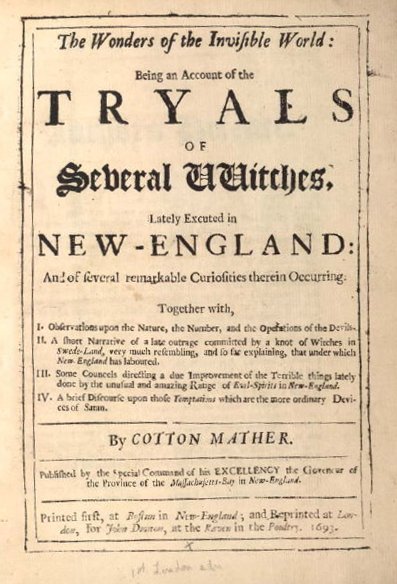 The first people the girls claimed were tormenting them were all women of the older generation, which strikes me as echoing the classic conflict of most fairy tales that feature young women-the younger verses the older generation; the younger and more beautiful triumphing over the now irrelevant mothers, grandmothers, and widows. The accused had virtually no chance of pleading their case, for their guilt was assumed, and the testimony of the bewitched was all the proof that was considered needed. Although most insisted they were innocent, a few offered very colorful confessions of their satanic ceremonies, broomstick flying, and pledging themselves to the devil. Yet, accusations kept building to include more and more people-some men were tried as witches, even a five year old girl (the daughter of one of the original women).
The first people the girls claimed were tormenting them were all women of the older generation, which strikes me as echoing the classic conflict of most fairy tales that feature young women-the younger verses the older generation; the younger and more beautiful triumphing over the now irrelevant mothers, grandmothers, and widows. The accused had virtually no chance of pleading their case, for their guilt was assumed, and the testimony of the bewitched was all the proof that was considered needed. Although most insisted they were innocent, a few offered very colorful confessions of their satanic ceremonies, broomstick flying, and pledging themselves to the devil. Yet, accusations kept building to include more and more people-some men were tried as witches, even a five year old girl (the daughter of one of the original women).
Reading about any witch hunts/trials/executions is a pretty tragic, maddening experience. It's a sad look into how fears, superstitions, ignorance and prejudices can lead to cruelty and death. From a fairy tale perspective, it's interesting to note that, while not all cultures or individuals believed in witches, in different time periods belief in such supernatural forces was widespread. So, while people told stories about Hansel and Gretel or Baba Yaga, while they may not have taken the events of the tales themselves to be fact, they lived in a world in which such things were possible.
 The fairy tale connection was not lost on Schiff, either, who writes: "Rich in shape-shifting humans, fantastical flights, rash wishes, beleaguered servants, evil stepmothers, bewitched hay, and enchanted apples, the crisis in Salem resembles another seventeenth-century genre as well: the fairy tale. It took place in the wilderness, the address to which the hunter transports you when instructed to cut out your lungs and liver, where wolves follow you home. Salem touches on what is unreal but by no means untrue; at its heart are unfulfilled wishes and unexpressed anxieties, rippling sexual undercurrents and raw terror...Many charges had a fairy-tale aspect to them: spinning more wool than was possible without supernatural assistance, completing housework in record time, enchanting animals, inquiring too solicitously about a neighbor's illness, proffering poisoned treats." The world of Salem really did seem to overlap the world of fairy tales in the experience of those who lived there.
The fairy tale connection was not lost on Schiff, either, who writes: "Rich in shape-shifting humans, fantastical flights, rash wishes, beleaguered servants, evil stepmothers, bewitched hay, and enchanted apples, the crisis in Salem resembles another seventeenth-century genre as well: the fairy tale. It took place in the wilderness, the address to which the hunter transports you when instructed to cut out your lungs and liver, where wolves follow you home. Salem touches on what is unreal but by no means untrue; at its heart are unfulfilled wishes and unexpressed anxieties, rippling sexual undercurrents and raw terror...Many charges had a fairy-tale aspect to them: spinning more wool than was possible without supernatural assistance, completing housework in record time, enchanting animals, inquiring too solicitously about a neighbor's illness, proffering poisoned treats." The world of Salem really did seem to overlap the world of fairy tales in the experience of those who lived there.
And while it can seem hard to believe for us, looking back, blaming things on witchcraft was often just people's attempts at explaining the many mysterious occurrences in life. For towns such as Salem, they were isolated-news that reached them was little and often unreliable; science was primitive, and there were darkness and dangers all around them in many forms.
The events in Salem started when a group of young girls began to exhibit unusual and frightening symptoms that might look to us to be insanity, and is now generally agreed to have been mass hysteria (although there are other medical theories out there). It's a condition that tends to manifest itself under very oppressive cultures, such as the religious extremism of the Puritans. Most suffocated of all were the young females, who were expected to be completely obedient to their parents, their masters/mistresses, and eventually to their husbands. It was even a common practice for children to live with other families as apprentices or maids from as young as 6, to train them in obedience and work. There was no such thing as playtime or recreational time for Puritan children, and sadly many of the girls would have been exposed to physical and sexual abuse in their stations. These Cinderellas had no hope of ever escaping such a life, since it was all condoned by their culture (except the sexual abuse) and their adult lives were destined for constant work, absolute obedience, and the heartache and pain of bearing but probably losing many children.
What makes Salem different from other witch hunts (as far as I'm aware) is the fact that the central characters, who were initially inflicted by witchcraft (or so it was believed) and contained all the power to accuse and take lives-were young, unmarried girls. Their testimony was taken to be absolute fact, despite lack of proof. Although, according to the records we have (which are scanty and unreliable to begin with), there was really weird stuff going on there-the girls would claim that they were being bitten/struck, and then teeth marks or welts would appear on their skin, or they would produce pins from their bodies! All in the presence of witnesses.
 The first people the girls claimed were tormenting them were all women of the older generation, which strikes me as echoing the classic conflict of most fairy tales that feature young women-the younger verses the older generation; the younger and more beautiful triumphing over the now irrelevant mothers, grandmothers, and widows. The accused had virtually no chance of pleading their case, for their guilt was assumed, and the testimony of the bewitched was all the proof that was considered needed. Although most insisted they were innocent, a few offered very colorful confessions of their satanic ceremonies, broomstick flying, and pledging themselves to the devil. Yet, accusations kept building to include more and more people-some men were tried as witches, even a five year old girl (the daughter of one of the original women).
The first people the girls claimed were tormenting them were all women of the older generation, which strikes me as echoing the classic conflict of most fairy tales that feature young women-the younger verses the older generation; the younger and more beautiful triumphing over the now irrelevant mothers, grandmothers, and widows. The accused had virtually no chance of pleading their case, for their guilt was assumed, and the testimony of the bewitched was all the proof that was considered needed. Although most insisted they were innocent, a few offered very colorful confessions of their satanic ceremonies, broomstick flying, and pledging themselves to the devil. Yet, accusations kept building to include more and more people-some men were tried as witches, even a five year old girl (the daughter of one of the original women).
Cotton Mather's contemporary account of the trials
For all that is known about the Salem Witch Trials, so much remains a mystery. To what extent were the young girls responsible for sending twenty people to death, any many more to months in a jail (in which the conditions were horrible)? Why did some of the accused witches confess (their confessions sometimes contradicted each other), and how could a relatively intelligent council of college-educated men have taken such testimonies as the only source of truth? Even if you accept the possibility of witchcraft, couldn't a clever witch cause a victim to have a vision of an innocent person torturing them? It was believed the Devil could only use someone's form with their permission, but one of the accusers even later admitted that the Devil had tricked her into accusing innocent people.
Joseph E. Baker's 1892 lithograph of the trials
By the way, if you're interested in reading more, I (and many other readers) would probably recommend that you choose a different book on the topic-this book, while informative, has many flaws (reviews on Goodreads or Amazon can explain why in more detail). Overall, it's a fascinating but very sad topic to read about, but at least it makes me grateful that our justice system-despite its imperfections-is far, far better than that of Salem's in 1692.
Subscribe to:
Comments (Atom)















